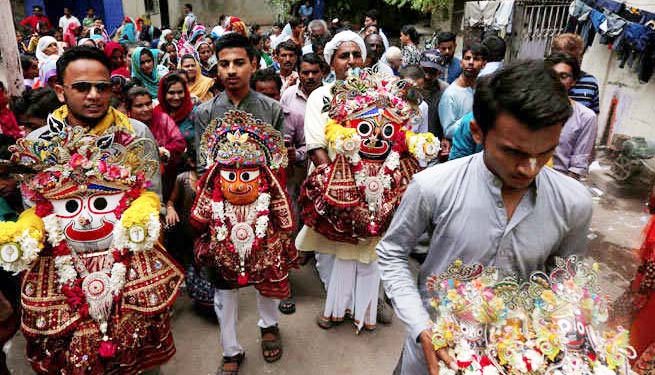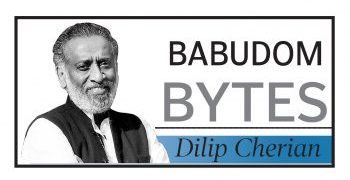The idol of Sri Jagannath, the Lord of the Universe, is taken out of Puri Srimandir as part of Rath Yatra. The nine-day festival provides an opportunity to the devotees to get a glimpse of the Lord and his sibling deities, once a year. The car festival is now celebrated in other parts of the country including West Bengal, Andhra Pradesh, Telangana and Gujarat.
Interestingly, the Rath Yatra is celebrated in many other countries too. Bhakti Vedanta Swami Prabhupada, the founder Acharya of the International Society for Krishna Consciousness (ISKCON), arranged the Rath Yatra in several countries with the help of his disciples. The first such Rath Yatra took place in San Francisco, in 1967. Then ISKCON gradually extended the celebration of the festival to over a hundred major cities including London, Moscow and New York.
ISKCON has taken the car festival even to Islamic countries like Pakistan. Starting 2015, ISKCON Pakistan has been celebrating Rath Yatra in the Swaminarayan temple compound in Karachi.
The kirtans (prayers) start early in the morning and the Rath Yatra rituals comprise Abhishek, Pahandi and Chhera Panhara, among others. Every year, ISKCON Pakistan also arranges lectures on Lord Jagannath before the Yatra commences.
Shyam Chandra of ISKCON, says,: “About 500 or more Hindus take part in the Yatra of Lord Jagannath and his siblings Balaram and Devi Subhadra. We pull the chariot at Swaminarayan temple.”
“The Hindu community in Pakistan comes together to celebrate with their relatives and friends. The Sanskrit hymn “Rathe ka vamanam drsitva punar janma na vidyate” means that a darshan of the Lord aboard the chariot absolves one of several sins and frees a soul from the cycle of rebirth and death. To give this opportunity to everyone at Karachi, we celebrate the Rath Yatra on the temple premises. The chariot is decorated with colourful curtains and flowers. Devotees pull the chariot, offer their prayers, join the kirtans and partake the prasad being distributed. They fill their buckets with prasadam and distribute it to ‘donnas’ and to onlookers and encourage them to pull the chariot,” adds Shyam Chandra.
“There is no Gundicha temple on the campus. We don’t have expert Brahmins to offer prayers to the Trinity, so we simply chant Jagannath ashtakam in front of the Lord before taking the prasad. Lord Jagannath is taken out of the temple in a perambulation called pahandi in the morning and brought back to the temple by sunset. We perambulate the temple thrice along with the chariot. People chant the holy ‘Hari naam’ while pulling the chariot. It takes almost three hours to complete three perambulations around the temple. Sometimes we take the chariot on the roads if the Pakistani government permits us. In the evening, we organise cultural programmes on the campus. This is all being done because of the blessings of Lord Krishna,” says Shyam Chandra.
ISKCON also takes out a colourful procession of Lord Jagannath in Muslim-majority Bangladesh. The procession starts in the morning and passes through the city before culminating at Dhakeshwari national temple in the evening amid tight security. Police and RAB officials guard the procession.
“Devotees pray for all living beings on earth and for communal harmony,” said Charu Chandra Das Brahmachari, who heads ISKCON Bangladesh.
Devotees pull the chariots of Sri Jagannath, Balabhadra, and Subhadra. Religious discourses and devotional musical sessions are arranged at ISKCON and Dhakeshwari temple for eight days and the return journey takes place on Bahuda Yatra. Over 50,000 people are expected to participate in this year’s car festival in Bangladesh.
The oldest known Rath Yatra in Bangladesh dates to 400 years at Yasho Madhab temple in Dhamrai, 30 km from Dhaka. Over 10,000 devotees throng the procession to pull a 27-ft long, three-storey chariot. Similar Rath Yatras are held by other non-ISKCON temples in Bangladesh.
In 2000, ISKCON brought a temple at Swamibag Ashram in Dhaka and organised large congregations for Rath Yatra.
SOYONG, OP







































